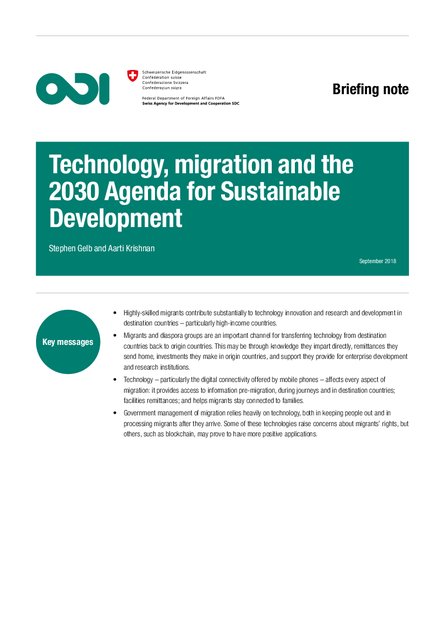
In this briefing, we discuss the technology–migration nexus and show its significance to a range of SDGs and achieving the 2030 Agenda for Sustainable Development. We demonstrate that migrants are (and have been) crucial for innovation and technological change processes in both destination and origin countries. And the use of technology and technological innovations is fundamental both to migration processes and to attempts by government authorities to manage migration – or restrict it.
Key messages:
- Highly-skilled migrants contribute substantially to technology innovation and research and development in destination countries – particularly high-income countries.
- Migrants and diaspora groups are an important channel for transferring technology from destination countries back to origin countries. This may be through knowledge they impart directly, remittances they send home, investments they make in origin countries, and support they provide for enterprise development and research institutions.
- Technology – particularly the digital connectivity offered by mobile phones – affects every aspect of migration: it provides access to information pre-migration, during journeys and in destination countries; facilities remittances; and helps migrants stay connected to families.
- Government management of migration relies heavily on technology, both in keeping people out and in processing migrants after they arrive. Some of these technologies raise concerns about migrants’ rights, but others, such as blockchain, may prove to have more positive applications.